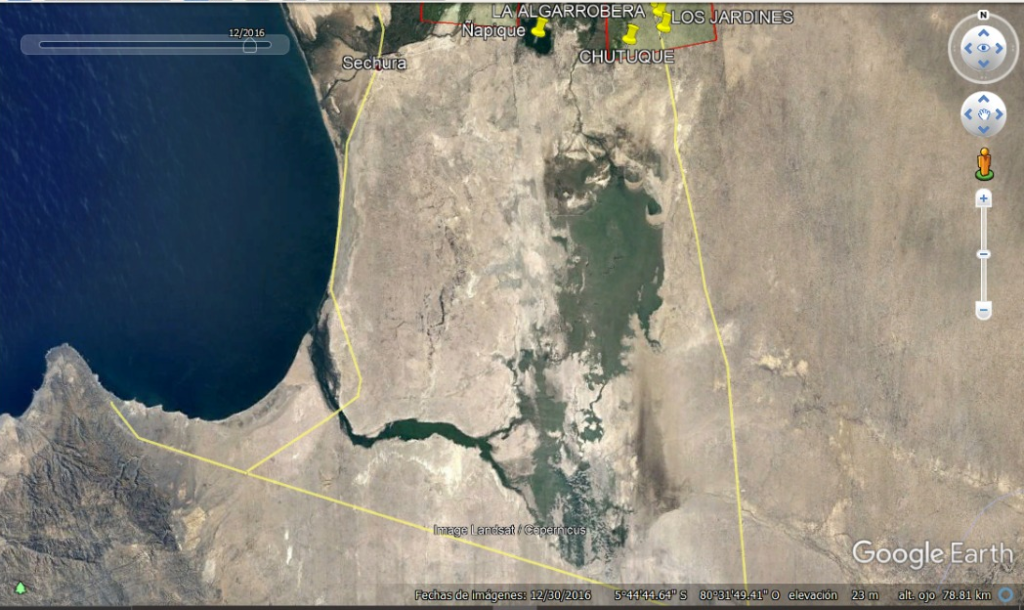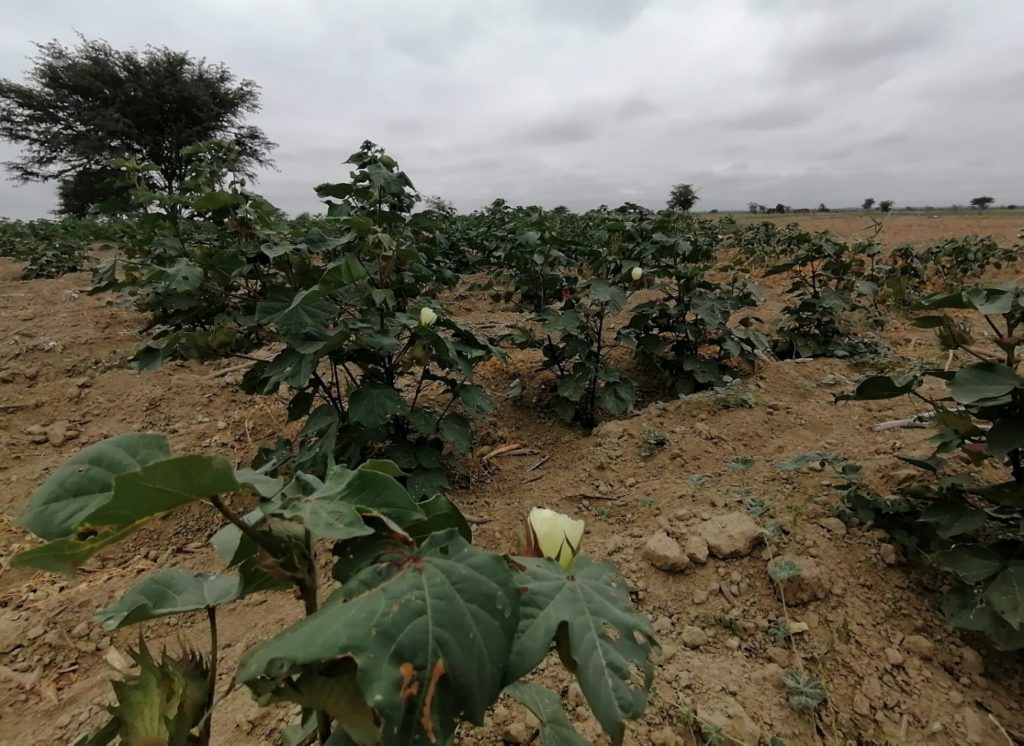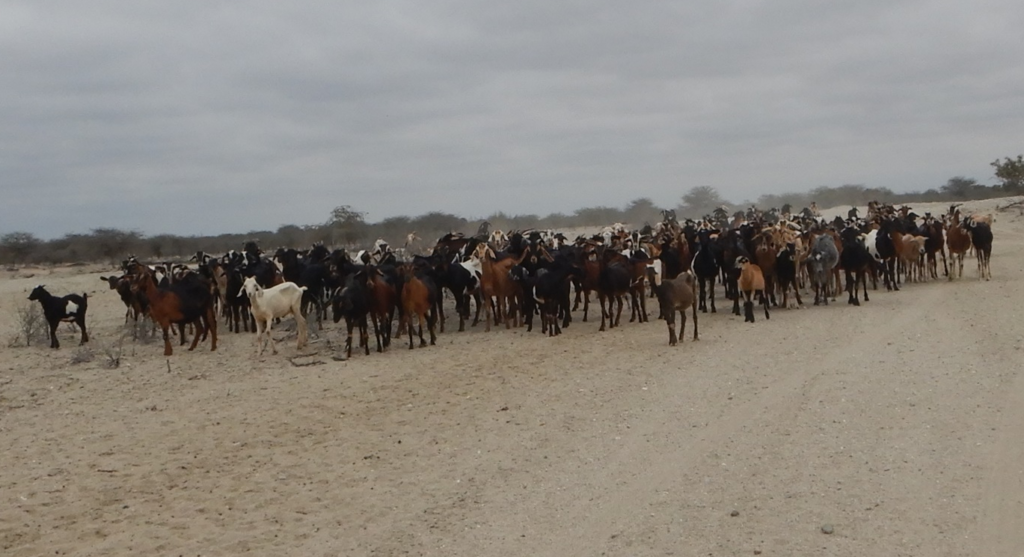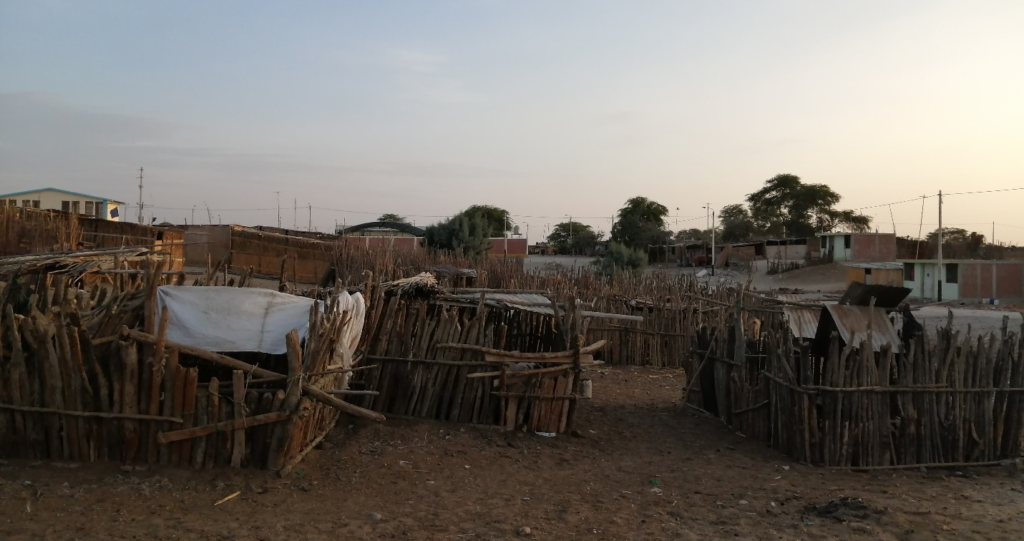El Niño Phenomenon: Stories from the desert of Sechura and La Niña lagoon.
It is necessary to begin these stories by giving a brief introduction of how the El Niño phenomenon impacts northern Peru. A surface mass of warm water enters the sea from the north of Peru and generates climatic anomalies such as the increase in sea temperature along with rains on the coast and in high Andean areas. As a result, rivers overflow, flooding population centres and affecting economic activities such as fishing, agriculture, transport, trade, etc.
This phenomenon has occurred in our country over the years mainly affecting the populations of the northern coast. During our interviews, we have been able to talk with several residents of Sechura who said that the strongest episodes occurred in the years 1982/83, 1997/98 and 2016/2017. The rains were so heavy that they flooded their fields along with the urban areas, affecting their homes. They practically lost everything, unfortunately these consequences show that the northern population was not prepared.
It is so that during all the El Niño Phenomena, the overflow of the rivers “Piura” and “La Leche”, form a temporary lagoon in the Sechura region’s desert called “La Niña”. Some residents believe that the name is due to the visit of the acting president “Alberto Fujimori” after the El Niño of 97/98. When seeing so much water and taking a tour of the lagoon, he named it “La Niña”. Even many villagers believe that their government, through a plan to plant Lisa’s fingerlings, allowed them to develop fishing for this species. As well as this, it has generated many stories and myths in relation to the formation of this lagoon and the presence of fish. Fishermen or settlers often cannot explain how this lagoon is formed and how so many species abound, for instance the Lisa, Tilapia, Mojarra, Shrimp, Prawn, etc.


Some residents adjacent to the Lagoon La Niña and Ñapique, consider that the formation of this large body of water could become a good economic and nutritional opportunity for their communities. Excess water usually goes into the sea, impacting riparian communities, as well as marine fisheries and aquaculture. It is believed that an adequate displacement of water from the rivers to La Niña and the construction of adequate hydraulic infrastructure that allows it, would allow the water to be stored in the desert, like a large natural dam. This would be used by peasant communities for agriculture, fishing and livestock, but also for the consumption of water in the urban area. IMARPE studies estimate that in 2017 La Niña reached a maximum extent of 2172 km2, housing a volume of 6 cubic km (Escudero and Xu, 2019). It is believed that the drying time of the lagoon is 2 years
In relation to fishing, the inhabitants, with the help of wooden rafts and fishing nets of the type “enmalle” (locally known as “Tamila”), fish in groups of families fon one or two weeks. To do this, they enter the desert and form camps around the Lagoon or on small islands formed by the dunes. In some interviews we have been told that some women help in the camps, especially in the processing, while the men are fishing. In rare cases, the women also support in the fishing work, including removing the fish from the net.

The commercialization and preservation of fishing has been changing over the years. The oldest settlers say that during the El Niño of 1982/83, the fish were eviscerated, washed and covered in salt. Then these were transported to main markets of the city (Sechura, Piura, Chiclayo) for marketing. Some merchants even exported the fish to Ecuador. On the other hand, parts of the catch served as a source of protein for the fishermen’s families. Nowadays, things are different: in the last phenomenon of 2016/2017, many fish marketers had the opportunity to supply their trucks with cold rooms near the lagoon “La Niña”. In this way, the fish was bought directly from fishermen and local and national markets were supplied with fresh and well preserved fish. Few residents have the economic capacity to take their product to market because they do not have mobility or refrigeration chambers to be able to enter the desert and move their catches to the markets with adequate refrigeration.
In addition to fishing, inhabitants of the high areas of the desert such as Chutuque, Mala Vida, Los Jardines, Nuevo Pozo Oscuro, etc. (where water does not arrive in normal times) tell us that after the El Niño phenomenon, the soil is moist and suitable for sowing seeds. It is believed that the overflow of the rivers brings with it sediments from other high Andean areas and fertilizes it naturally. It takes advantage of the soil moisture for seasonal crops such as: sweet potato, varieties of beans, squash, corn, cotton, menestras, etc. They also alternate between agriculture, fishing and livestock. Usually the husbands go fishing and the rest of the family is responsible for maintaining agricultural crops and the care of animals. The money obtained from fishing is invested in the purchase of seeds, animals and household inputs.



On the other hand, there are agricultural population centers such as San Cristo, Santo Domingo, Chepito, Oz de Oro, etc. that are located in the lowest areas which have irrigation systems and urban infrastructure. The main crops are rice, corn, legumes, sweet potatoes and fruit trees. However, for them, El Niño is not synonymous with a blessing, they mentioned that their plots are totally flooded for several months, during this time they can not plant. Many indicate that their farmland is flooded before harvest, generating great economic losses. In addition, the humidity of the rains increases the mortality of their pigs and goats, getting sick and forcing the communities to sacrifice them.

We have been taking quantitative information on agricultural, fishing and livestock production in Niño and normal years in order to know the impact of El Niño both in the desert communities and in some population centers of the lowlands.
This blog was written by: Evelyn Inguil (1) , Ivan Gomez (1) Gabriel Bonnamy (2) and Maya Gomez-Coultas (2)
(1) La Molina National Agrarian University – Perú, Lima / (2) St. Andrews University- -UK, Scotland
